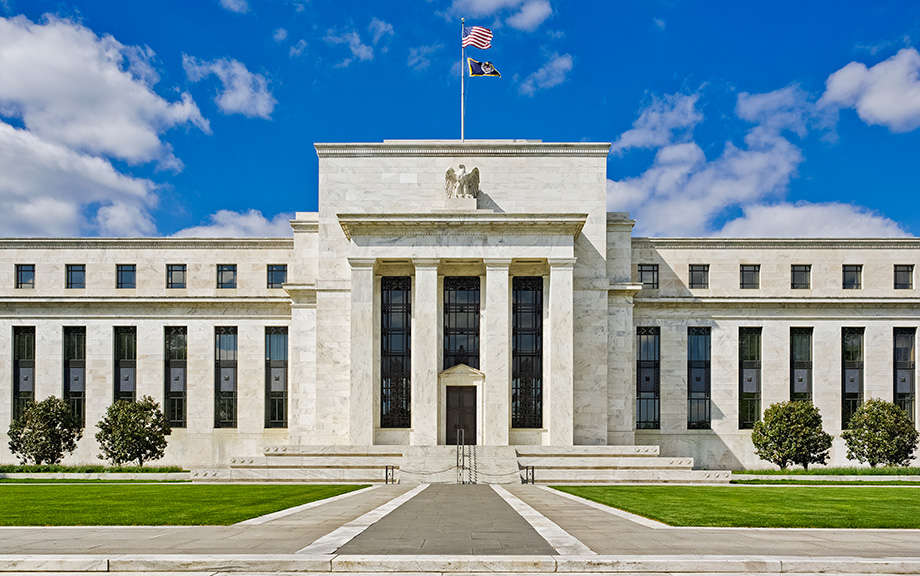The Rise in Deposit Flightiness and Its Implications for Financial Stability

Deposits are often perceived as a stable funding source for banks. However, the risk of deposits rapidly leaving banks—known as deposit flightiness—has come under increased scrutiny following the failures of Silicon Valley Bank and other regional banks in March 2023. In a new paper, we show that deposit flightiness is not constant over time. In particular, flightiness reached historic highs after expansions in bank reserves associated with rounds of quantitative easing (QE). We argue that this elevated deposit flightiness may amplify the banking sector’s response to subsequent monetary policy rate hikes, highlighting a link between the Federal Reserve’s balance sheet and conventional monetary policy.
The Zero Lower Bound Remains a Medium‑Term Risk

Interest rates have fluctuated significantly over time. After a period of high inflation in the late 1970s and early 1980s, interest rates entered a decline that lasted for nearly four decades. The federal funds rate—the primary tool for monetary policy in the United States—followed this trend, while also varying with cycles of economic recessions and expansions.
Reserves and Where to Find Them

Banks use central bank reserves for a multitude of purposes including making payments, managing intraday liquidity outflows, and meeting regulatory and internal liquidity requirements. Data on aggregate reserves for the U.S. banking system are readily accessible, but information on the holdings of individual banks is confidential. This makes it difficult to investigate important questions like: “Which types of banks hold reserves?” “How concentrated are they?” and “Does the distribution change over time or in response to significant events?” In this post, we summarize how non-confidential data can be used to answer these questions by providing publicly available proxies for bank-level reserves.
Tracking Reserve Ampleness in Real Time Using Reserve Demand Elasticity

As central banks shrink their balance sheets to restore price stability and phase out expansionary programs, gauging the ampleness of reserves has become a central topic to policymakers and academics alike. The reason is that the ampleness of reserves informs when to slow and then stop quantitative tightening (QT). The Federal Reserve, for example, implements monetary policy in a regime of ample reserves, whereby the quantity of reserves in the banking system needs to be large enough such that everyday changes in reserves do not cause large variations in short-term rates. The goal is therefore to implement QT while ensuring that reserves remain sufficiently ample. In this post, we review how to gauge the ampleness of reserves using the new Reserve Demand Elasticity (RDE) measure, which will be published monthly on the public website of the Federal Reserve Bank of New York as a standalone product.
The Central Banking Beauty Contest

Expectations can play a significant role in driving economic outcomes, with central banks factoring market sentiment into policy decisions and market participants forming their own assumptions about monetary policy. But how well do central banks understand the expectations of market participants—and vice versa? Our model, developed in a recent paper, features a dynamic game between (i) a monetary authority that cannot commit to an inflation target and (ii) a set of market participants that understand the incentives created by that credibility problem. In this post, we describe the game, a type of Keynesian beauty contest: its main novelty is that each side attempts, with varying degrees of accuracy, to forecast the other’s beliefs, resulting in new findings regarding the levels and trajectories of inflation.
A New Set of Indicators of Reserve Ampleness

The Federal Reserve (Fed) implements monetary policy in a regime of ample reserves, where short-term interest rates are controlled mainly through the setting of administered rates, and active management of the reserve supply is not required. In yesterday’s post, we proposed a methodology to evaluate the ampleness of reserves in real time based on the slope of the reserve demand curve—the elasticity of the federal (fed) funds rate to reserve shocks. In this post, we propose a suite of complementary indicators of reserve ampleness that, jointly with our elasticity measure, can help policymakers ensure that reserves remain ample as the Fed shrinks its balance sheet.
When Are Central Bank Reserves Ample?

The Federal Reserve (Fed) implements monetary policy in a regime of ample reserves, whereby short-term interest rates are controlled mainly through the setting of administered rates. To do so, the quantity of reserves in the banking system needs to be large enough that everyday changes in reserves do not cause large variations in the policy rate, the so-called federal funds rate. As the Fed shrinks its balance sheet following the plan laid out by the Federal Open Market Committee (FOMC) in 2022, how can it assess when to stop so that the supply of reserves remains ample? In the first post of a two-part series, based on the methodology developed in our recent Staff Report, we propose to assess the ampleness of reserves in real time by estimating the slope of the reserve demand curve.
On the Distributional Consequences of Responding Aggressively to Inflation

This post discusses the distributional consequences of an aggressive policy response to inflation using a Heterogeneous Agent New Keynesian (HANK) model. We find that, when facing demand shocks, stabilizing inflation and real activity go hand in hand, with very large benefits for households at the bottom of the wealth distribution. The converse is true however when facing supply shocks: stabilizing inflation makes real outcomes more volatile, especially for poorer households. We conclude that distributional considerations make it much more important for policy to take into account the tradeoffs between stabilizing inflation and economic activity. This is because the optimal policy response depends very strongly on whether these tradeoffs are present (that is, when the economy is facing supply shocks) or absent (when the economy is facing demand shocks).












 RSS Feed
RSS Feed Follow Liberty Street Economics
Follow Liberty Street Economics